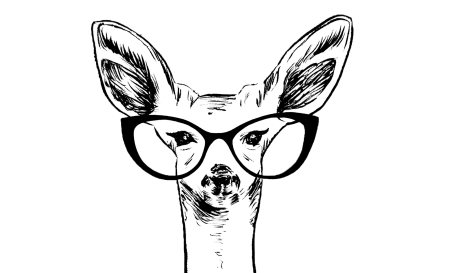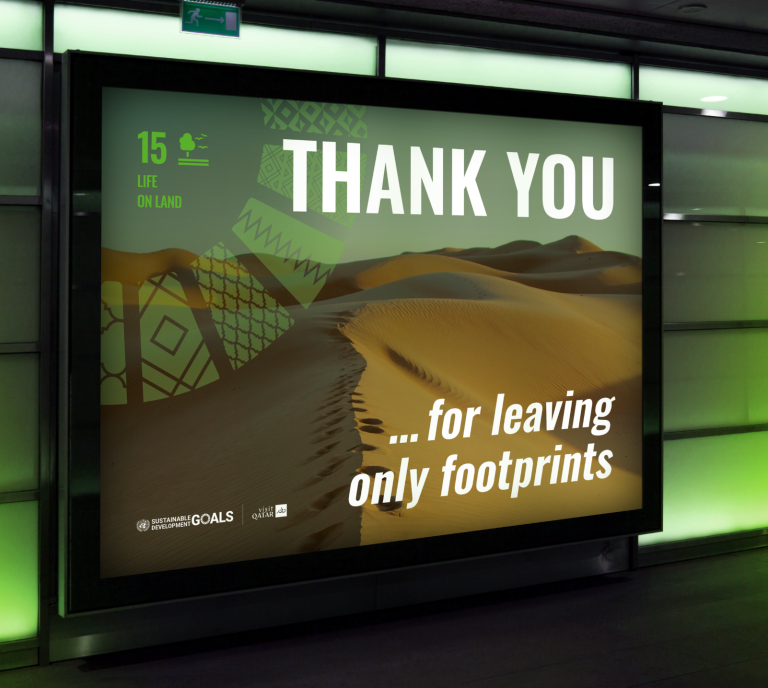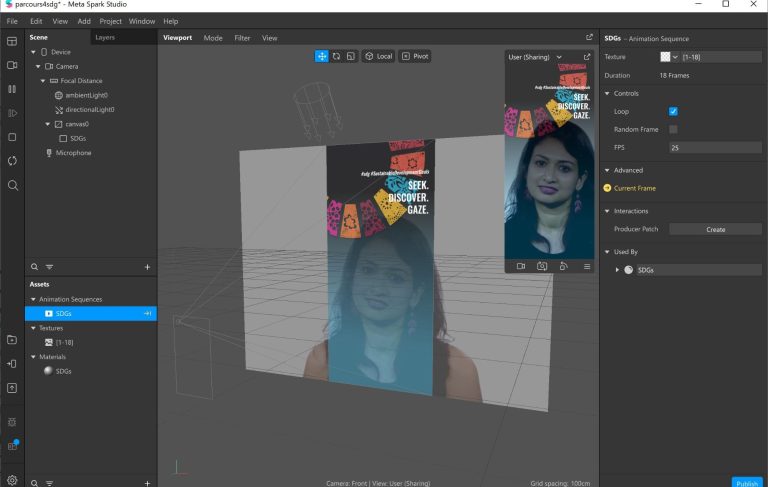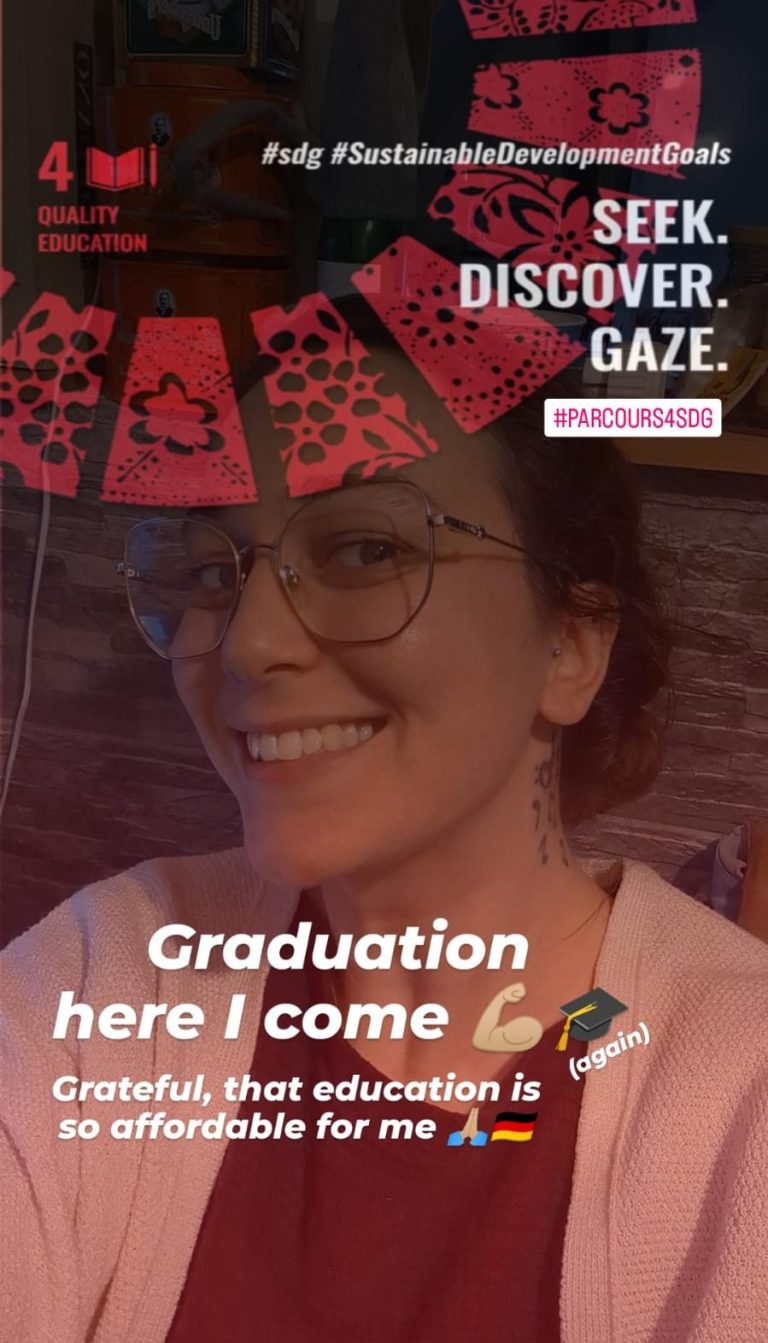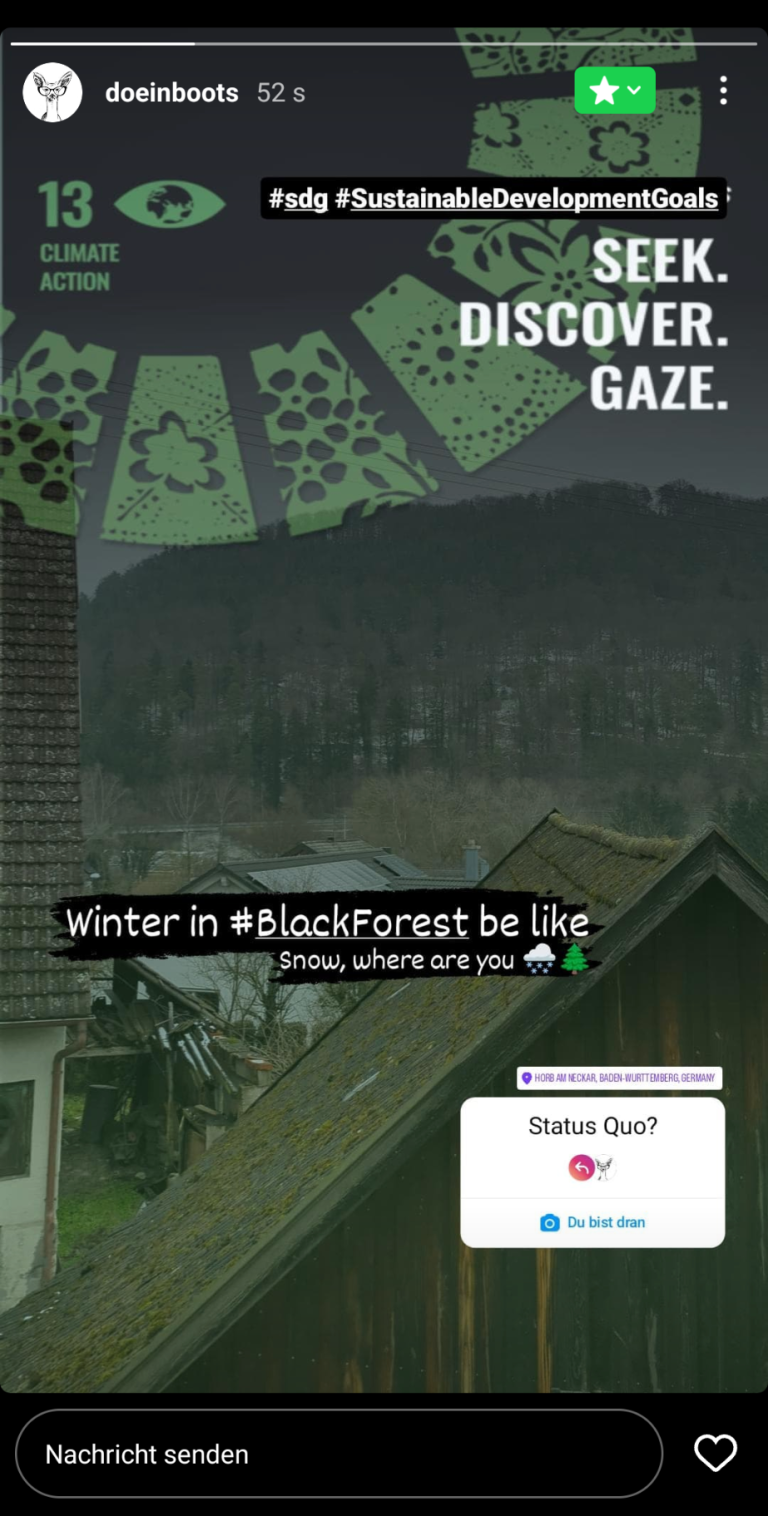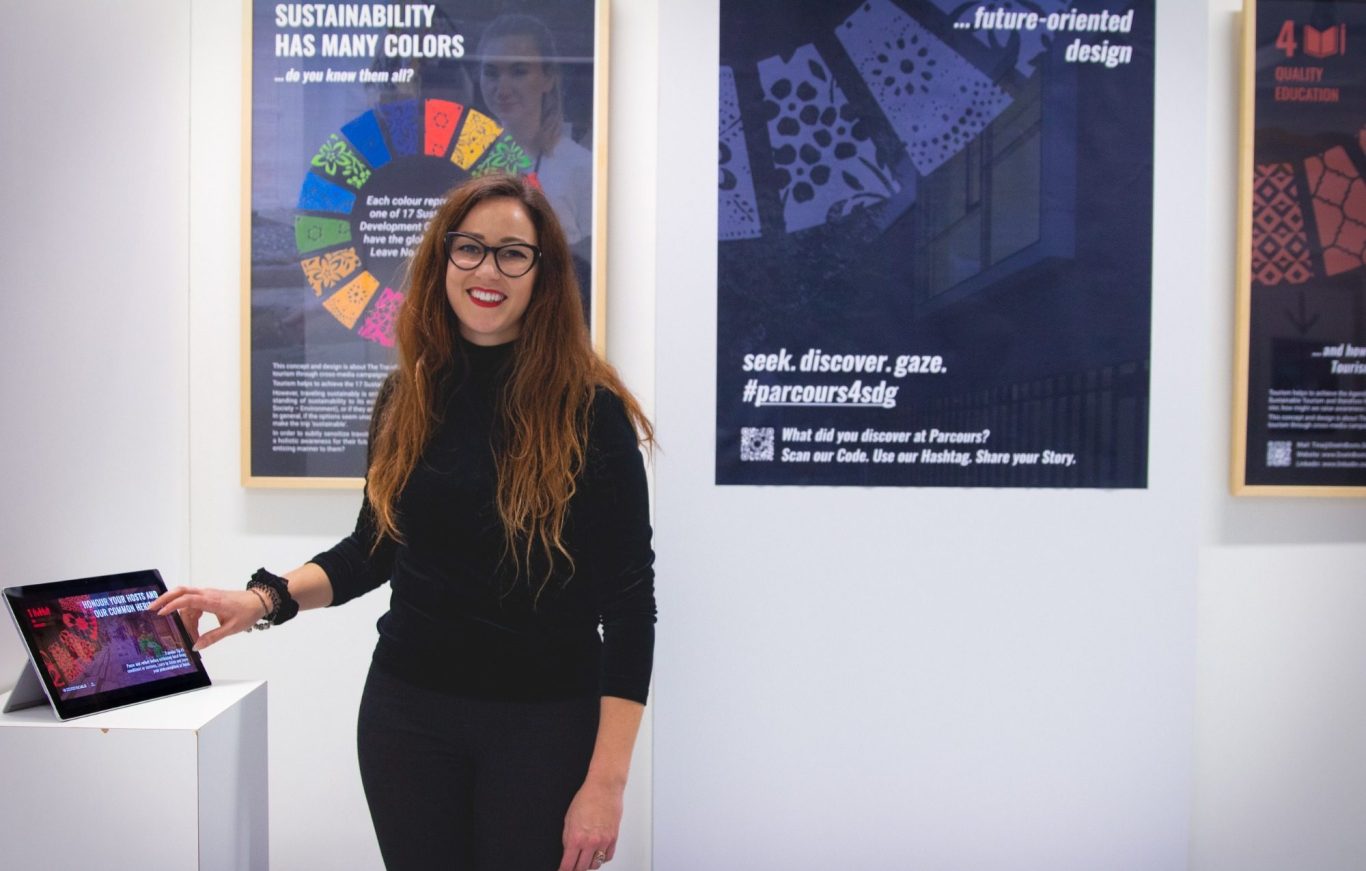UX CONCEPT
Awareness Campaign for the SDG
Tourism helps to achieve the 17 Sustainable Development Goals. However, the offer for future-oriented options is only available to a certain extent if people are being limited in their understanding of Sustainability to its ecological dimension, rather than to its entirety (triangle of Economy – Society – Environment), or if they are constrained by their travel behavior due to (business-related) obligations. In general, if the options seem unappealing and unrewarding, some travelers will not be able or willing to make the trip ‘sustainable’.
In order to subtly sensitize these travelers to the fundamentals of Sustainable Tourism and therefore foster a holistic awareness for their future travel (purchasing) behavior, how might considerate and future-oriented – in short, sustainable – travel behavior be communicated in an enticing manner to them?
The concept and design of my Bachelor Project is about The Traveling of the Future and how to promote awareness of sustainable tourism through cross-media campaigns. As a use case, it serves as a fictional initiative of the United Nations World Trade Organization (UNWTO) and the mobilization of its official cooperation partners such as Qatar Airways, Qatar National Tourism Council, Government of Colombia or Hilton, and brand ambassadors for Responsible Tourism such as the football players Lionel Messi, Iker Casillas or Fernando Hierro.
Big Data can be used to deliver an omnichannel experience at an individual level throughout the entire user journey. Let's think of a visitor to the FIFA World Cup Qatar 2022 who comes all the way from Germany and thinks little about what impact his trip has or could have, or what the term sustainability even means. Even before booking the trip, his travel (buying) behavior can be positively influenced via social media channels. Based on the data shared, further touchpoints can be individually designed and communicated. And even upon departure, his future travel (buying) behavior can be subliminally influenced. This process of change is not a quick one, but that's okay - in Germany we say "after the trip is before the trip."
And if cookies or geofencing were disabled or public touchpoints inaccessible, there will be direct contact with the audience at some point in the user journey, making brand loyalty and personalization all the more important. The next question I ask myself now is: What potential does Artificial Intelligence offer me as a designer to support me on this individualized journey?
After connecting to the airport wifi, personalized and discreet messages can be played via public LED screens thanks to geofencing.
Brand Loyalty pave the way to offline touchpoints. Here, the first individual approach via one's own channels is only possible within one's own four walls.
Even after departure, personalized messages can be used to playfully explore what lasting impact one's journey had or what other options remain.
AR Instagram filter to spread awareness about the SDGs in a playful and interactive way for use at events or hotspots - in this case it was used for our graduation exhibition "Parcours 22/23" at Münster School of Design.
Showcasing my thesis project at the graduation exhibition "Parcours 22/23" at Münster School of Design was a full success (external link):
Client: University Project for UNWTO (fictional)
Skills: Big Data, Artificial Intelligence, User Journey, Human-Centered Design, Conceptual Design
Doe in Boots Design
© 2018-2023 Tina Rehschuh. All rights reserved. Imprint. Privacy Policy.
All contents of this online portfolio, especially concepts and prototypes, but also texts, photographs and graphics, are protected by copyright. The copyright belongs to me, Tina Rehschuh, unless explicitly marked otherwise. Please ask me if you would like to use the contents of this website. Or even better - let us develop the presented ideas together!
Wir benötigen Ihre Zustimmung zum Laden der Übersetzungen
Wir nutzen einen Drittanbieter-Service, um den Inhalt der Website zu übersetzen, der möglicherweise Daten über Ihre Aktivitäten sammelt. Bitte prüfen Sie die Details und akzeptieren Sie den Dienst, um die Übersetzungen zu sehen.
